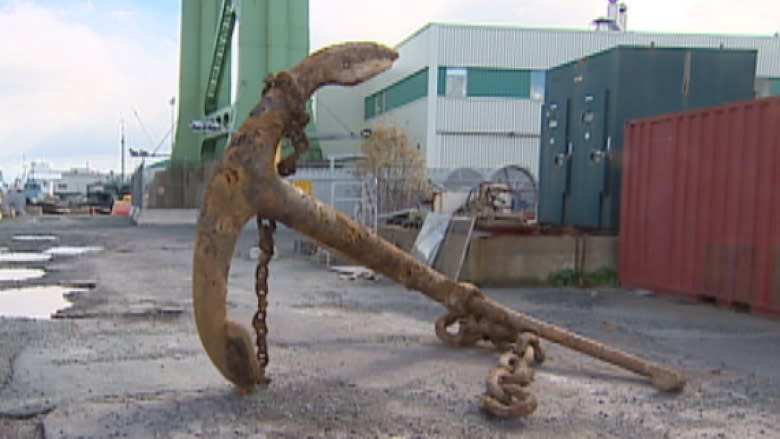HMCS Niobe anchor damaged in Halifax Explosion found
An anchor and chain believed to be from a Canadian naval ship damaged in the Halifax Explosion were recently discovered in Halifax.
The roughly 900-kilogram anchor was unearthed on Oct. 14 by an excavation crew at the Royal Canadian Navy's dockyard in Halifax. The work is part of the navy's preparations for the National Shipbuilding Procurement Strategy.
When the anchor and chain were discovered, they were encrusted in mud, so the fire department was called and it hooked up a hose to a hydrant to clean them off.
Richard Sanderson, the director at the Naval Museum of Halifax, said the anchor and chain are in good condition.
"You could take this and if you had a big enough ship, you could use it," he said.
The anchor and chain have been inspected and assessed against relevant documents and photographs, and officials are almost certain the anchor came from HMCS Niobe.
The Niobe was the first Canadian warship to enter Canada’s territorial waters and arrived on Oct. 21, 1910. The 11,000-tonne armoured cruiser was purchased by Canada from the Royal Navy and steamed across the Atlantic from Portsmouth, England.
After the Niobe was paid off, it functioned as a depot ship from July 1915 until 1920 and was moored in the Halifax Harbour.
When the Halifax Explosion occurred on Dec. 6, 1917, the concrete-embedded anchor was pulled from the harbour floor as the ship was battered from the blast.
"That explosion was a half a mile to the north of us and the force of the blast actually tore the Niobe's anchor from the seabed, and the ship started to drift to the east," said Sanderson.
Once the ship was re-secured, additional anchors were put in place. It is believed the anchor discovered was one of the three bow anchors used to keep the Niobe in place.
The anchor is quite large, measuring four metres high and 3.35 metres wide.
Each link of the anchor's chain is 51 centimetres by 28 centimetres and weighs about 34 kilograms.



